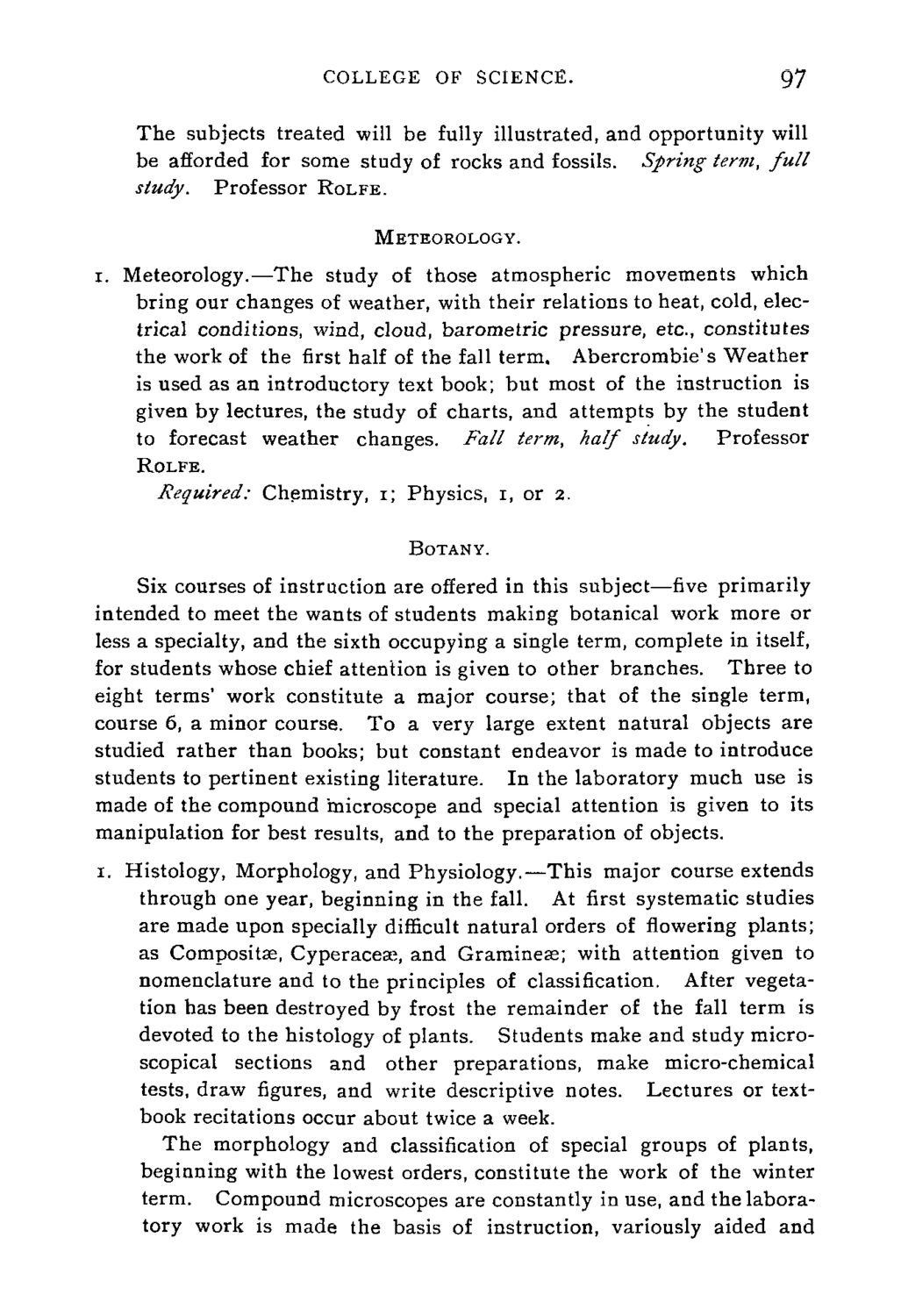| |
| |
Caption: Course Catalog - 1892-1893
This is a reduced-resolution page image for fast online browsing.

EXTRACTED TEXT FROM PAGE:
COLLEGE OF SCIENCE. 97 The subjects treated will be fully illustrated, and opportunity will be afforded for some study of rocks and fossils. Spring term, full study. Professor ROLFE. METEOROLOGY. I. Meteorology.—The study of those atmospheric movements which bring our changes of weather, with their relations to heat, cold, electrical conditions, wind, cloud, barometric pressure, etc., constitutes the work of the first half of the fall term. Abercrombie's Weather is used as an introductory text book; but most of the instruction is given by lectures, the study of charts, and attempts by the student to forecast weather changes. Fall term, half study. Professor ROLFE. Required: Chemistry, i; Physics, i, or 2. BOTANY. Six courses of instruction are offered in this subject—five primarily intended to meet the wants of students making botanical work more or less a specialty, and the sixth occupying a single term, complete in itself, for students whose chief attention is given to other branches. Three to eight terms' work constitute a major course; that of the single term, course 6, a minor course. To a very large extent natural objects are studied rather than books; but constant endeavor is made to introduce students to pertinent existing literature. In the laboratory much use is made of the compound microscope and special attention is given to its manipulation for best results, and to the preparation of objects. i. Histology, Morphology, and Physiology.—This major course extends through one year, beginning in the fall. At first systematic studies are made upon specially difficult natural orders of flowering plants; as Compositae, Cyperacea;, and Gramineas; with attention given to nomenclature and to the principles of classification. After vegetation has been destroyed by frost the remainder of the fall term is devoted to the histology of plants. Students make and study microscopical sections and other preparations, make micro-chemical tests, draw figures, and write descriptive notes. Lectures or textbook recitations occur about twice a week. The morphology and classification of special groups of plants, beginning with the lowest orders, constitute the work of the winter term. Compound microscopes are constantly in use, and the laboratory work is made the basis of instruction, variously aided and
| |